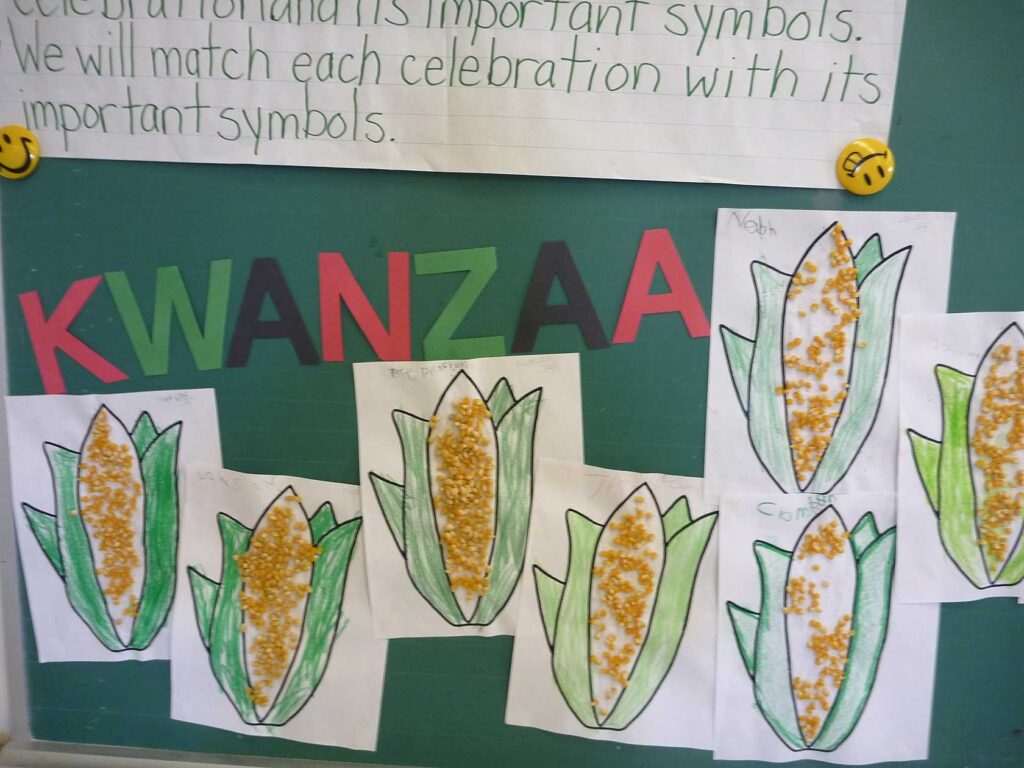
It’s the time of year when educators have a chance to spotlight Kwanzaa — a vibrant, week-long celebration of African culture and Black pride observed from December 26 to January 1. Often overlooked in schools, Kwanzaa’s seven principles offer powerful lessons on community, identity and self-determination that can empower Black students all year round.
Here are seven creative ideas for teaching Kwanzaa to Black students while fostering a deeper understanding of its principles:
1. Practicing Umoja (Unity):
Umoja, which means “unity” in Swahili, is defined on the Kwanzaa website as “to strive for and maintain unity in the family, community, nation, and race.” This key principle can be a valuable practice in the classroom.
Learning Strategy: Assign students to create a collective quilt or mural that represents their shared values and cultural heritage. This project will promote the strength and value that is found in unity.
2. Encouraging Kujichagulia (Self-determination):
Kujichagulia, or self-determination, is a principle referring to defining, naming, creating, and speaking for oneself. This important principle is perfect for helping Black students affirm their identity.
Learning Strategy: Encourage students to write a list of self-affirmations for seven days or write an essay on their personal identities, aspirations, and the principle of self-determination in achieving their goals.
3. Embracing Ujima (Collective work and responsibility):
Translated as “collective work and responsibility,” Ujima refers to uplifting your community and an active commitment to shared liberation — a principle that can be highly inspiring to Black students in the classroom.
Learning Strategy: Organize a class initiative, such as a community outreach program, to instill a sense of responsibility and collective effort. This assignment will promote the power of shared commitment and goals.
4. Promoting Ujamaa(Cooperative economics):
Similar to Ujima, Ujamaa, translated as cooperative economics, refers to the practice of uplifting the community economically. This principle is a good opportunity to teach students the importance of financial literacy or businesses that benefit the community.
Learning Strategy: Turn your classroom into a mock marketplace where students can create and trade goods or services. This principle will instill the value of economic cooperation and entrepreneurship.
5. Cultivating Nia (Purpose):
Nia, which means “purpose,” is defined as a collective vocation that “builds and develops community to restore our people to their traditional greatness.” Like the self-determination principle, purpose is a key principle that can help Black students not only affirm themselves but also cultivate how to continue to build on their identity.
Learning Strategy: Organize a session in the classroom where students set personal and academic goals that align with the purpose of community and student achievement. This principle will help students understand the importance of seeing themselves as positive assets.
6. Fostering Kuumba (Creativity):
Meaning “creativity,” the principle of Kuumba is defined as “doing as much as we can in the way we can, in order to leave our community more beautiful and beneficial than we inherited it.”
Learning Strategy: Host an event for students to present artwork or decorate an area outside the school. This project will help students reflect on their cultural heritage and personal creativity.
7. Instilling Imani (Faith):
The final principle, Imani or “faith,” refers to “believing with all our heart in our people, parents, teachers, leaders, and the righteousness and victory of our struggle.” This full-circle principle presents the perfect opportunity to teach students the importance of believing in themselves and everyone around them.
Learning Strategy: Invite some community leaders or role models to speak with students on the last day before the winter break to share their stories of perseverance and success. This event will inspire students to believe in themselves and their academic achievement.
This article originally appeared on Word in Black.






